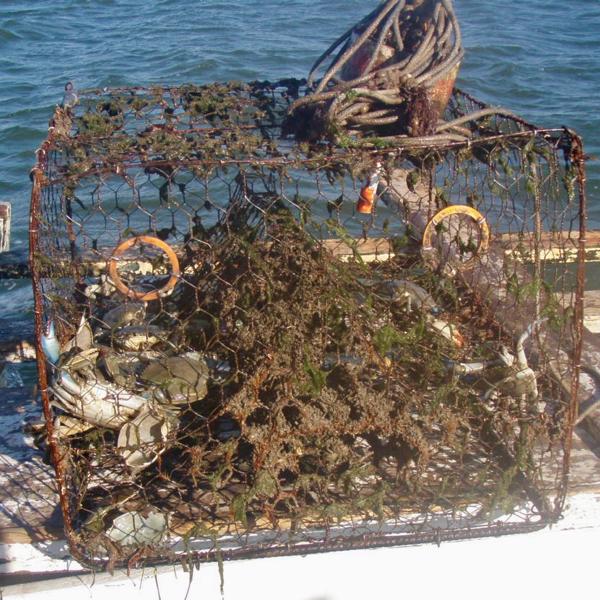VIMS – The National Oceanic and Atmospheric Administration has chosen William & Mary’s Virginia Institute of Marine Science as home base for a new national program focused on protecting U.S. coastal waters from derelict fishing gear.
VIMS’ new Nationwide Fishing TRAP Program—“TRAP” for Trap Removal, Assessment, & Prevention—will fund removal of the pots and traps used to harvest crabs and lobsters, and establish a Derelict Trap Policy Innovation Lab to synthesize the collected data to inform prevention and mitigation policies at the state and federal levels.
The brainchild of Drs. Kirk Havens, Donna Bilkovic, and Andrew Scheld, the TRAP program builds on VIMS’ success in leading a multi-year partnership with the Virginia Marine Resources Commission and Virginian watermen to remove more than 34,000 derelict or “ghost” crab pots from the Chesapeake Bay. Scientists in this Virginia Marine Debris Removal Program also pioneered methods to assess the economic and ecologic impacts of the derelict pots and the benefits of their removal.

A 2016 study estimated that pot removals during the initial VIMS-led program increased baywide harvests by 38 million pounds, putting an extra $33.5 million into the pockets of Bay crabbers. The same analysis revealed that removing just 10% of derelict crab pots and lobster traps on a global basis could increase landings by 293,929 metric tons, at a yearly value of $831 million.
The $8M provided by NOAA to implement the 4-year TRAP program is the largest single grant award in VIMS’ 83-year history. Many of these dollars will be passed on to program partners through an annual grant competition. The program also includes funding for commercial and tribal fishers to remove additional derelict pots from Virginia’s waters.
Havens, Director of the Center for Coastal Resources Management (CCRM) at VIMS, says “By coordinating the removal of derelict traps nationwide, we can leverage our experience and expertise to benefit coastal ecosystems and economies from Maine to Alaska.”
Leave a Reply